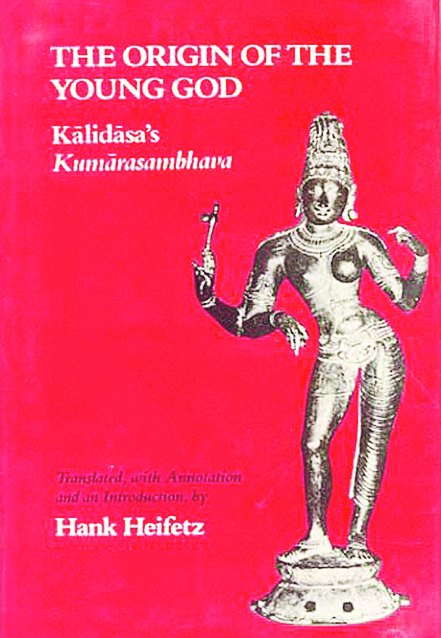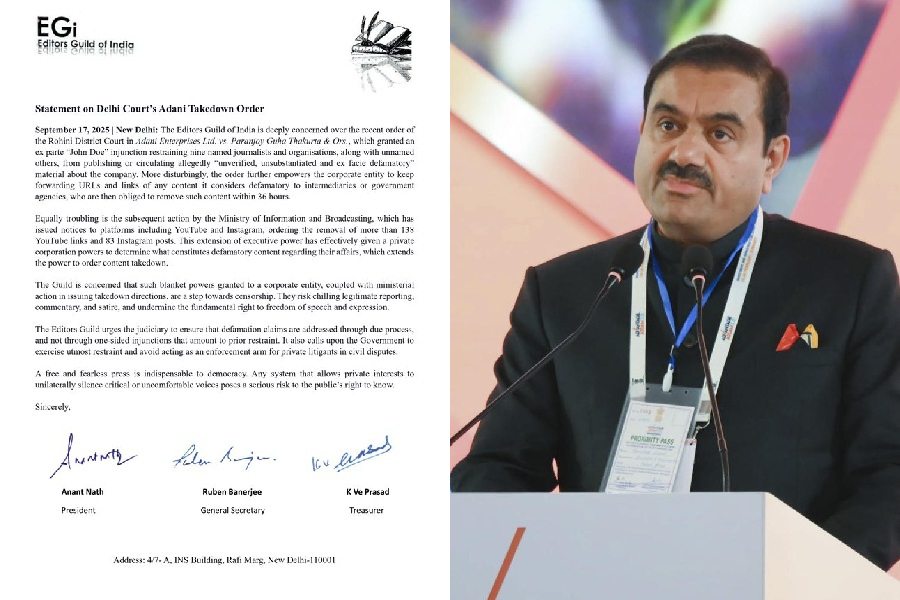
THE ORIGIN OF THE YOUNG GOD: KALIDASA'S KUMARASAMBHAVA Translated by Hank Heifetz,
Penguin, Rs 399
The eminent littérateur, Buddhadev Bose, voiced a candid confession while translating Kalidasa's Meghaduta from the original Sanskrit into Bengali. He observed, "Notwithstanding the contiguity of the two languages, Sanskrit and Bengali, the euphony of the former cannot be replicated in the latter." Bose created his own euphony in his target language, and achieved a happy as well as modern transcreation into Bengali, in which the sound faithfully evoked the sense. This transcreation has been attempted and achieved in English by Hank Heifetz.
When one concentrates on the modern and idiomatic English rendering of Kumarasambhavam , one comes across a cascade of euphony in all the eight sargas or cantos. Well-versed in Sanskrit prosody (as is evident in the copious notes), the translator has extracted the essence from the original and clothed it in his own English version, lyrical and sensitive. For example, quatrain 16 in Sarga 1 reads: "The Seven Great Rishis have taken lotuses in their hands/ from pools on his heights and left the rest/ growing there and flourishing, blossoming in the rays/ of sunlight from below where the sun circles lower down."
Again, in Sarga 5, the transcreation, inspired by the original, reads: "We have gods here at home who can please your heart./ What, my child, what has tapas to do with your body?/ The soft sirisa flower can carry the weight/ of a bee but will not bear the touch of a bird."
The translator is remarkably honest. He does not forget to mention that the descriptive 'soft', which is not in the original, has been added by him. Indeed, there are quite a few additions like these which contribute to the overall musicality of the language without disturbing, in any way, the pristine meaning of the text.
Heifetz, who is accomplished in his art of translation, faces no difficulty in transcreating the grand visual component of the long poem. Similes and metaphors abound, and this introduces us to the rich rhetoric of Sanskrit poetic diction celebrating the birth of the new god, Kartikeya, who is going to regain heaven for the gods by destroying the usurper-demon, Tarakasur. One such visual image, out of many, reads: "But the Spring's friend is gone/ never to return, like a lamp put out by the wind,/ and you see I am like the wick/ clouded over by the smoke of a loss that I can't bear." (Sarga 4, Quatrain 30.) Yet another, describing Uma's beauty, is soft and suggestive. In short, the translator captures the sound and the visual image effortlessly.
While reading Kumarasambhavam , Meghaduta, Sanskrit love lyrics and, in particular, Vaishnav poetry, one cannot avoid questioning Nirad C. Chaudhuri's outrageous assumption that Bengalis (and, by extension, Indians) learnt and acquired romanticism from the West. Not only does this assumption challenge Herbert Read's famous declaration about romanticism being a universal phenomenon, but it also undermines the quality of deep and pervasive Indian romanticism which flourished from the days of Vashishtha and Arundhati, Nala and Damayanti, Aja and Indumati. One feels like asking what could possibly be more romantic than Shakuntala's Viraha or the Yaksha's loneliness and longing expressed in Meghaduta, or the artistic sublimation of erotic love's fervour in the magic expression: "She with her beautiful face at once was in the power/ of Siva and of drunkenness, taking her shyness away,/ both eagerly drawing her towards the bed/ and both now turned into kindled desire." (Sarga 8, Quatrain 79.)
Moreover, when one experiences the meticulously structured examples of Vaishnav romanticism, starting from Radha's Purvarag and ending with Bhavasammelan, one cannot help but question Niradbabu 's assertion further. How could he, steeped as he was in Sanskrit literature, commit such an epistemic blunder? Indian romanticism, as evident in Kumarasambhavam, acquires a cosmic dimension encompassing the sorrow and joy of the gods, the interplay of heaven and earth with beauty and divinity, which distinguishes it from other romantic quests enacted elsewhere.
At the risk of attracting protests and accusations, I would firmly observe that Kumarasambhavam is not an abiding example of erotic poetry the way in which Catullus's and Amaru's poetry is. Some critics underline a few quatrains in the last Sarga (Numbers 4, 8, 9, 14 and 19) to claim that this poem is undoubtedly erotic. But hard evidence suggests that the sargas preceding the eighth and final one are not erotic by any stretch of imagination. To sound a bit flippant, Kalidasa extinguishes Eros when the great Shiva, in a burning rage, turns Kamdeva, the god of Eros, into ashes with the help of his flaming third eye. Why does he do so? Because Kama had the temerity to disturb him during his sacral meditation.
I would regard this poem as a mini-epic which includes much more than mere eros. Emotions and acts of deprivation and banishment of the gods, their sorrows and agonies, the coming together of the Holy Trinity - Shiva, Vishnu and Brahma - when Shiva proceeds to marry Uma are all vibrantly present in the poem, which pits the helpless gods against the victorious demon. We are treated to a cosmic spectacle where the dramatis personae are the embodiments of good and evil, of the sacred and the profane. In this sense, Kumarasambhavam is much more broad-based than Meghaduta and Abhijnanasakuntalam, which concentrate primarily on love and romance. I could take even another step forward and claim that this work is endearingly secular, one in which gods behave like restless human beings against the majestic interplay of the elements of nature.
A final request and question for the translator who has done a splendid job: won't he traverse beyond this mini-epic and translate other great Sanskrit creative texts authored by Kalidasa? There is an excellent translation of Raghuvamsam by Father Robert Antoine, now we have Kumarasambhavam in English. Perhaps we should wait for Heifetz's translation of Meghaduta . It would be a delight to compare his English version with the superb Bengali version rendered by Buddhadev Bose. Neither Bose nor Heifetz, to borrow from an old adage, is a traitor.










